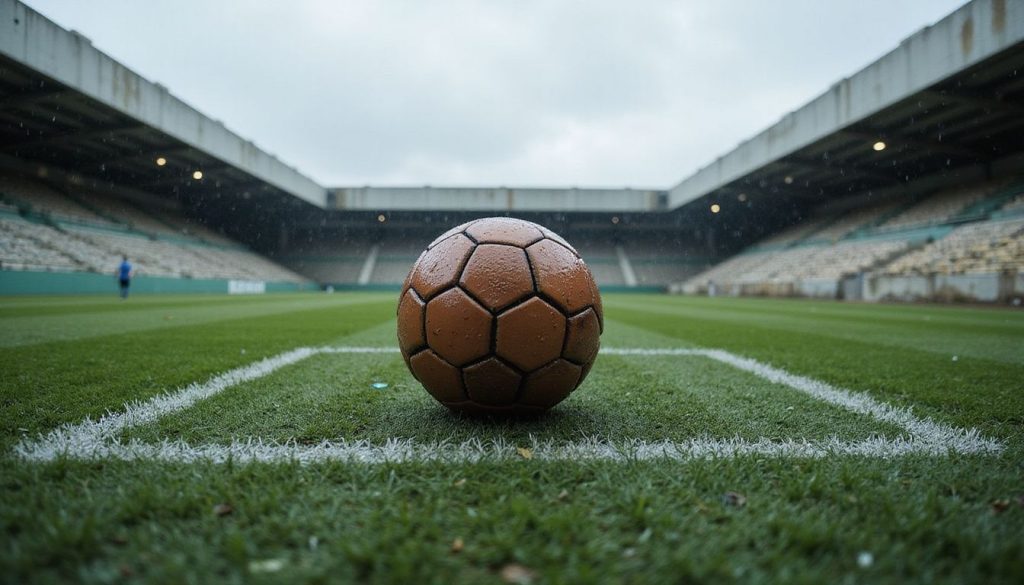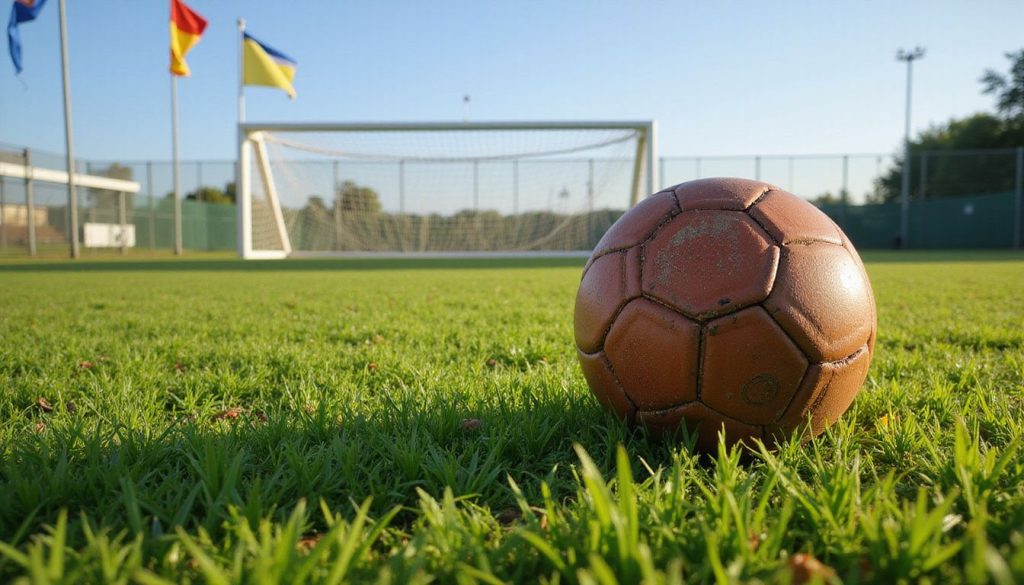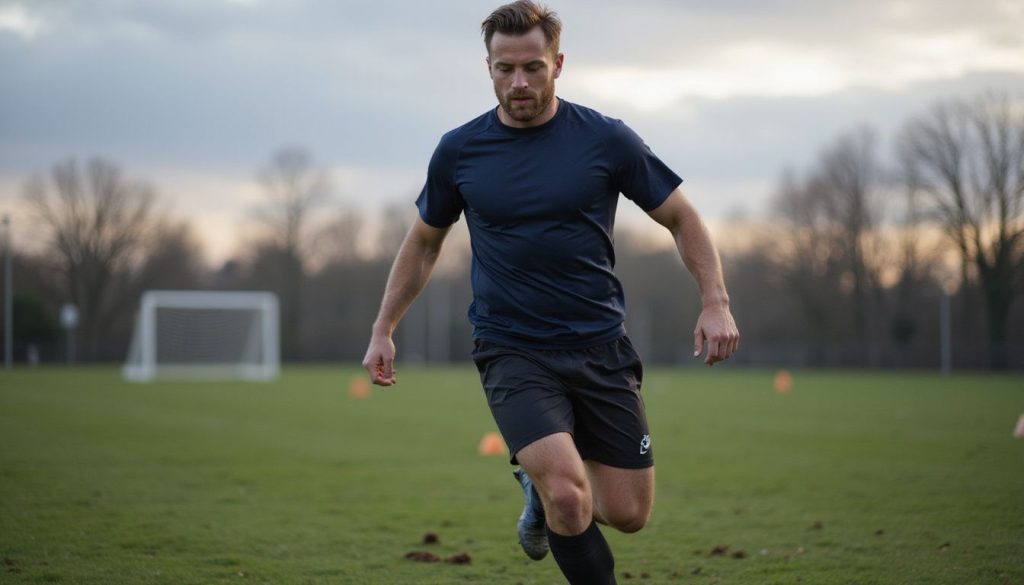Soccer Decision Making Training
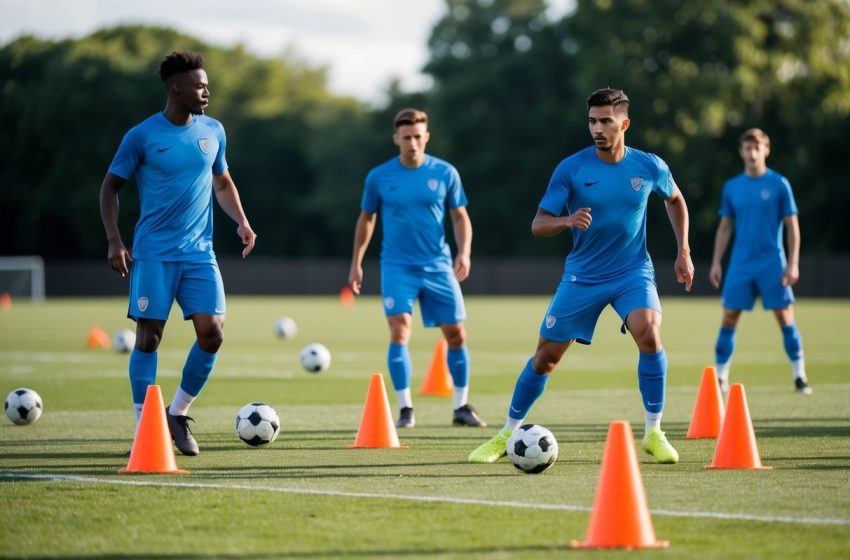
Soccer Decision Making Training: Simple Drills to Boost Game Intelligence
Making fast and smart decisions during a soccer game can set you apart from other players. Training your decision-making skills in soccer helps you see the field better, react quicker, and choose the best plays when it matters most. This is a skill that grows with practice, just like passing or shooting.

You’ll find that soccer becomes much more enjoyable when you trust your choices on the field. Whether you’re a beginner or already have some experience, there are simple drills and exercises you can use to get faster and more confident at making decisions.
Mastering decision-making doesn’t just help you perform better—it helps you enjoy the game and play smarter with your team each match.
Fundamentals of Soccer Decision Making

Making good decisions in soccer depends on how well you see the field, use your time, and respond to force and pressure from other players. By building these skills, you can improve your play and help your team succeed.
Importance of Spatial Awareness
Your ability to notice what is happening around you is called spatial awareness. This means looking up before you get the ball, checking behind you, and seeing where your teammates and opponents are standing.
When you scan the field often, you can plan your next move. You can spot open spaces to run into or identify a teammate who is better placed to receive the ball.
Here are some ways to develop spatial awareness:
- Practice checking over your shoulder before receiving the ball.
- Use your eyes to scan the field, not just look at your feet.
- Communicate with your teammates about what you see.
Strong spatial awareness helps you avoid turnovers and make stronger passes.
Role of Time and Space in Play
Time and space control much of what happens in a soccer match. When you have more time and space, you can make better decisions and use your skills confidently.
If defenders are closing in fast, you need to act quickly. If you are alone, you can take an extra touch, dribble, or set up a better pass. Understanding how much time and space you have guides your choices on the field.
Tips for managing time and space:
- Move constantly to create open passing lanes.
- Judge how much time you have by listening to teammates and scanning the field.
- Be aware of the game speed and make early choices.
Using time and space well can give you and your team an advantage, especially in tight games.
Understanding Force and Pressure
In soccer, force and pressure come from opponents trying to take the ball or block your movement. You must handle this by making quick choices and managing your body position.
When you feel pressure, protect the ball by placing your body between the opponent and the ball. Use quick movements or simple passes if space is limited and the pressure is high.
Key actions when under force and pressure:
- Keep your balance and lower your center of gravity.
- Shield the ball using your arms and body.
- Decide fast—clear the ball, pass, or dribble out.
Recognizing and adjusting to pressure levels helps you maintain control and avoid giving the ball away.
Developing Technical Skills for Better Choices

When you improve your technical skills in soccer, you make smarter decisions on the field. Practicing ball control, first touch, and different types of dribbling helps you respond quickly and effectively during the game.
Improving Ball Control
Ball control is about confidently handling the ball in any situation. When you have strong control, you can keep possession even under pressure. This skill lets you react well to sudden changes and find better passing options.
To practice, use drills that challenge both feet, such as juggling, passing against a wall, or working in tight spaces. Try moving with the ball around cones or teammates to build comfort in movement. Better ball control leads to fewer mistakes and allows you to look up to see the field instead of worrying about your feet.
Tips for better ball control:
- Always keep your body balanced
- Use the inside, outside, and sole of your foot
- Stay relaxed and ready to adjust
Mastering First Touch
Your first touch often decides your next move. A good first touch helps you direct the ball where you want and gives you more time to make choices. If your first contact with the ball is soft and controlled, you avoid losing possession.
Work on receiving passes at different speeds and angles. Set up drills where you cushion the ball and then pass or dribble away quickly. Try using both your right and left foot, as well as your thighs and chest, so you’re comfortable in all scenarios. Practicing in small spaces with defenders can help, too.
Key benefits of a strong first touch:
- Keeps defenders away
- Allows fast direction changes
- Creates space for passing or shooting
Dribbling and Speed Dribbling
Dribbling is about moving past defenders while keeping the ball close. Speed dribbling helps you move quickly up the field when there’s open space. Both types require close control, quick reactions, and the ability to read the game.
Start by using cones to change direction often, working on your weaker foot as well as your strong one. For speed dribbling, focus on taking longer touches and sprinting while looking up. In matches, mix slow and fast dribbling to keep defenders guessing. Use both feet and all parts of the foot to stay unpredictable.
A simple chart for dribbling keys:
| Technique | Focus | Purpose |
|---|---|---|
| Close dribbling | Short touches | Beat defenders in tight areas |
| Speed dribbling | Longer touches | Cover ground quickly |
| Both feet | Left & right usage | Stay unpredictable |
Smart Off-the-Ball Movement

Smart off-the-ball movement helps you create space, support teammates, and stay one step ahead of the defense. Good movement is about more than running; it ties together passing, team coordination, and predicting the next play.
Passing and Movement Patterns
Your runs without the ball affect how well your team can keep possession and create chances. Try to move after making a pass; this is called “pass and move.” When you pass the ball, immediately look for new space to get the ball back or pull defenders away from your teammates.
Use the following ideas to improve your movement:
- Stay out of your teammate’s space to keep the field spread out.
- Make diagonal or curved runs to confuse defenders.
- Change your pace and direction often.
Example Table: Types of Off-the-Ball Runs
| Run Type | Purpose |
|---|---|
| Overlap | Support the dribbler outside |
| Underlap | Cut inside and surprise |
| Third-man Run | Add extra passing option |
Practicing these patterns helps you read the game better and connect as a group.
Supporting Team Play
Supporting your team means always giving the player with the ball safe and clear passing options. Try to stay visible to the ball carrier—avoid hiding behind defenders. By creating triangles and diamonds around the player with the ball, your team has more ways to move forward or keep the ball.
Keep enough distance from teammates so defenders can’t easily cover two players at once. Use quick movement to show for the ball if someone is under pressure. When you support well, you make your team harder to defend against and safer when holding possession.
Communicate with your teammates using talking or hand signals so everyone knows where support is coming from.
Anticipation Strategies
Anticipation helps you move into the right spots before the ball gets there. Watch the ball closely and read the body language of both your teammates and the opponents. This helps you predict where passes will go and where the next opening might be.
You can practice anticipation by playing small-sided games. Focus on reading the game and making decisions quickly.
Some strategies include:
- Watching for a midfielder to look up, then starting your run.
- Noticing when a defender shifts position and using that moment to change direction.
- Making runs into the defender’s blind zone so you are not seen right away.
Being able to think ahead keeps you involved in play and makes your movement smarter.
Decision-Making Soccer Drills and Exercises
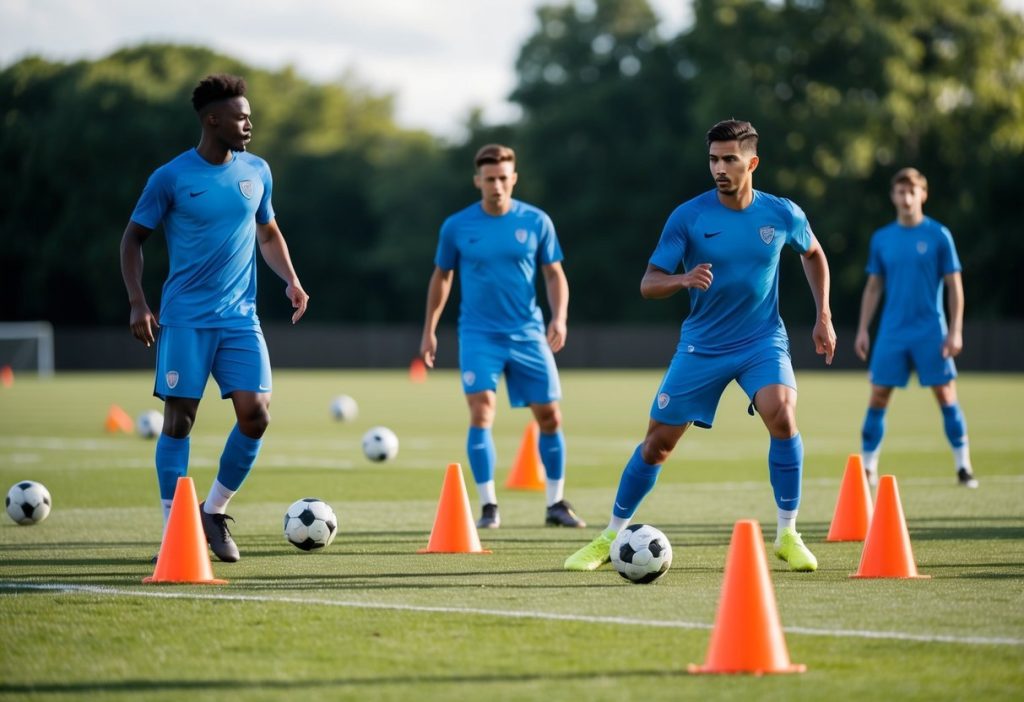
Training decision-making in soccer means practicing how to react quickly and make good choices during play. These drills help you think faster, read situations, and select the best action at the right time.
Game-Like Drills
Game-like drills place you in situations that copy real matches, making training feel more like a live game. In one example, a pass-and-move drill uses cones and moving defenders. You have to receive the ball from a teammate, then pick the best pass under mild pressure.
Rondos are another good option. In a rondo, several attackers try to keep the ball away from one or two defenders in a small square. Each touch forces you to read movement, spot openings, and react fast.
Try varying the number of players or space to make decisions tougher. Coaches can give points for finding open teammates or switching the field. Use feedback right after each action to help players learn what works best.
Small-Sided Games
Small-sided games, such as 3v3 or 5v5, let you make more choices in less time. With fewer players on the field, you get more touches, more chances to attack and defend, and more situations where you need to choose quickly.
Use simple rules to shape the game. For example:
- Set a limit on touches before a pass
- Award extra points for switching the field
- Add neutral players who always play offense
These games should flow quickly. You must decide when to press, when to pass, or when to dribble. Coaches can pause play to explain a choice or let the game run and discuss after.
Competitive Scenario Training
Competitive scenarios put you in match-like situations with set goals. For example, your team might need to break down a compact defense in the final two minutes. You must pick the right time to attack, pass, or keep possession.
Coaches design these drills to challenge your ability to react under pressure. You might face a must-score situation, or play with one less player and see how you adjust.
Tracking success rates helps you see progress. Using timers, scoreboards, or giving rewards keeps the drill fun and game-like. Rotate roles so everyone faces different decision points in attack and defense.
Finishing Under Pressure
Finishing drills improve your ability to score when options change quickly. You might get a pass with defenders chasing you or have only a few seconds to choose between shooting and passing.
A common drill is the rapid-fire finishing exercise. Here, three players serve balls in a row, and you must take a shot after each with a defender closing space every time. The goal is quick, smart choices—shooting with either foot, or making a surprise layoff to a teammate.
Use cones, dummies, or real defenders for variety. Track goals, but also reward creative passes or smart movement. The pressure in these drills makes your next match feel easier to handle.
Advanced Defensive and Attacking Decisions
Good decision making in soccer goes beyond knowing how to pass or shoot. It involves reading opponents, using clever moves, reacting quickly, and making confident choices in key moments.
Tackling Judgment
Your ability to decide when and how to tackle can change a game. Rushing in too early often leads to fouls or missed tackles, while waiting too long lets attackers get past. You need to judge the ball carrier’s speed, direction, and body position.
Effective defenders stay low, watch the hips, and choose moments when the attacker has loose control of the ball. Practicing in small-sided games helps sharpen these instincts.
Look for chances to block passing lanes as well. Smart tackling isn’t just about winning the ball, but about forcing mistakes and supporting your teammates’ positioning.
| Common Mistakes | Better Choices |
|---|---|
| Diving in or lunging | Using patience and timing |
| Watching the ball only | Watching feet and hips |
| Tackling from behind | Waiting for the attacker to turn |
Deception Techniques
Using deception means doing the unexpected and misleading your opponent. On attack, tricks like step-overs, body feints, and sudden changes of pace can beat defenders. Defenders can also use deception by pretending to challenge, then delaying their move to make attackers uncomfortable.
You need to practice these skills often to make them natural. The key is not to overuse any one move. Combining dribbling, feints, and sharp stops will keep the defense guessing.
Examples of attacking deception:
- Fake shots
- No-look passes
- Sudden stops or cuts
Examples of defensive deception:
- Showing one direction, then closing another
- Pausing before making a tackle
- Faking a lunge to see the attacker’s reaction
Recovery and Heading Decisions
If you lose possession or get caught out of position, recovery runs are vital. You must decide whether to sprint back at full speed, cut off passing lanes, or mark a player. Recovery is about reading the play and quickly choosing the best way to help your team defensively.
Heading decisions matter in both defense and attack. On defense, clear the ball high and wide to avoid danger. On offense, aim downward and toward open space when trying to score or assist.
Key points for heading and recovery:
- Time your jumps and keep your eyes on the ball
- Decide quickly whether to control, clear, or pass with your head
- Communicate with teammates to avoid confusion and missed chances
For both recovery and heading, practice under time pressure will help you make quicker, smarter decisions during games.
Frequently Asked Questions
Soccer decision-making training helps you read the game, act fast under pressure, and choose the best moves for your team. You’ll find practical exercises, guidance on quick thinking, and details about how these skills grow in young players.
What are effective drills for improving decision-making in soccer?
Small-sided games, like 3v3 or 4v4, give you lots of chances to make choices in real time. These drills force you to decide when to pass, dribble, or shoot as you manage space and pressure.
Decision grids, where you react to a coach’s signals and change your action in the moment, are also helpful. Another drill is setting up “scenarios” where you practice against different defensive shapes.
How can players enhance their quick-thinking skills on the pitch?
You can play fast-paced games with short time limits or small playing areas. This pushes you to act without overthinking and builds your reaction speed.
Practicing with constant movement and changes in direction also helps keep your brain active. Coaches often shout out changes—like “switch sides”—to encourage you to adjust quickly.
What are some fun attacking drills that also train decision-making?
In “numbers-up” attacks, you compete in 3v2 or 4v3 setups. You must make quick choices to find open teammates or take shots.
Another game is “attack versus defense” where your team is given a challenge, such as scoring within a set time. These drills are fun, competitive, and demand that you decide between passing, dribbling, or shooting.
Can decision-making in soccer be taught through specific training methods?
Yes, you can learn decision-making with routines that combine skill practice and realistic game situations. Methods like “game-based learning” and positional play help you understand when and how to act.
Coaches use guided questions during practice to get you to think about your choices on the field.
What principles guide decision-making processes within a soccer match?
Timing, awareness, and communication matter most. You need to know where teammates and opponents are, understand the score, and think ahead.
Effective decision-making relies on reading the game, reacting to pressure, and staying calm. Keeping your eyes up and talking with teammates helps you make better choices.
How does decision-making training differ for youth players in soccer?
For younger players, drills are kept simple and focus on recognizing options, not just making the “right” decision. Practice involves lots of repetition, encouragement, and space to make mistakes.
Coaches will often ask questions and give feedback to help you learn. The goal is for you to build confidence and enjoy trying different solutions on your own.

